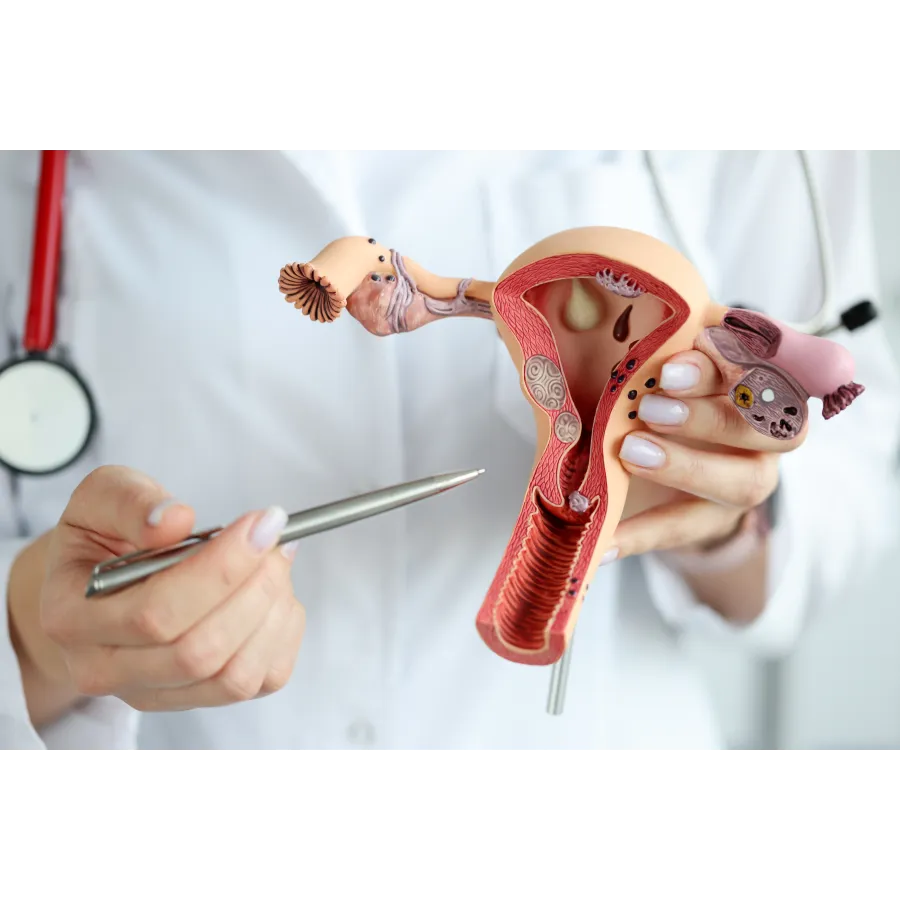Endometrial Ablation
Endometrial ablation is a procedure to stop excessive menstrual blood loss. It involves the removal of a thin layer of tissue (endometrium) which lines the uterus.
Why You Might Need Endometrial Ablation
Endometrial ablation is used to manage heavy bleeding which may have several different causes. Your doctor might recommend endometrial ablation if you have:
- Unusually heavy periods, sometimes defined as needing a new pad or tampon every two hours or less
- Uterine bleeding that lasts more than eight days
- Anemia caused by excessive blood loss

How Advanced Gynecology Can Help
Our board-certified team of women’s health experts are ready to help you with diagnostic care and a range of treatment options. We will counsel you about the best options for you and your health.
For more information, schedule an appointment today or call 678-263-0280 to speak with one of our patient coordinators.

Methods for Performing an Endometrial Ablation
Radiofrequency: this method uses radio waves to expand an electrical mesh that has been placed into the uterus to destroy the uterine lining.
Freezing: your provider inserts a probe with freezing capabilities into the uterus. Using an ultrasound to guide the way, the tip of the probe then freezes and destroys the uterine lining.
Hydrothermal: heated fluid is pumped into the uterus to destroy the lining.
Heated balloon: a balloon is inserted into the uterus and then filled with fluid which destroys the lining
Electrosurgery: your provider uses an electric current that flows through a wire loop or rollerball to electrically destroy the uterine lining.
Microwaves: a thin probe allows microwave energy to reach and eradicate the uterine lining.
Some endometrial ablations are performed using a tool called a hysteroscope which has a small camera at the end. This tool allows your doctor to see the inside of your uterus to properly perform the procedure
Schedule Online
Side Effects & Risks of Endometrial Ablation
- Cramps, similar in pain and feel to menstrual cramps for 1 to 2 days
- Thin, watery discharge mixed with blood. This discharge may be heavy for the first 2 to 3 days after the procedure and can last a few weeks
- Frequent urination
- Nausea
On rare occasions, the fluid used to expand the uterus during electrosurgery may be absorbed into your bloodstream which can cause a serious condition. This is typically prevented by carefully checking the amount of fluid used throughout the procedure.
- Infection
- Bleeding
- Rupture of uterine wall or bowel
- Burns to the vagina, vulva, and/or bowel
Endometrial ablation will not cause infertility. While you can still get pregnant after, it is possible that pregnancies after endometrial ablation will pose a higher risk to both mother and baby. For this reason, long-lasting contraception or even sterilization is sometimes recommended after endometrial ablation for this reason.
Who Should Not Receive Endometrial Ablation
- Certain abnormalities of the uterus or endometrium
- Endometrial hyperplasia
- Cancer of the uterus, or an increased risk of uterine cancer
- An active or recent pelvic infection
- A recent pregnancy
